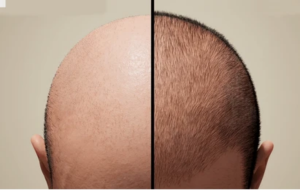Breast self-exams are a crucial aspect of proactive healthcare, empowering individuals to take an active role in monitoring their breast health and detecting potential issues early. These exams are not a replacement for professional medical advice but serve as a valuable tool for early detection, allowing individuals to become intimately familiar with their own breast tissue and identify any deviations from the norm. By consistently performing self-exams, women can establish a baseline understanding of their breast’s typical appearance and texture, making it easier to notice subtle changes that might otherwise go undetected. This heightened awareness can lead to quicker intervention and potentially more favorable outcomes if a problem does arise.
The timing of a breast self-exam is crucial for accuracy. For women who menstruate, the optimal time to conduct the exam is approximately one week after their menstrual cycle ends. During this period, breast tissue is typically less tender and swollen, minimizing the likelihood of misinterpreting normal hormonal fluctuations as potential abnormalities. For women who no longer menstruate, establishing a consistent monthly routine, such as performing the exam on the first or last day of the month, is recommended to maintain regularity and facilitate the identification of changes. This consistent practice reinforces the habit of self-care and increases the chances of early detection.
Performing a breast self-exam involves a systematic approach that can be easily incorporated into a woman’s routine. The exam can be performed in front of a mirror, lying down, or even in the shower, making it adaptable to individual preferences. The first step involves visually inspecting the breasts in front of a mirror, looking for any changes in size, shape, symmetry, or skin texture, such as puckering, dimpling, or nipple inversion. Raising the arms and pressing the palms together can further accentuate any subtle changes in the breast tissue. The next step involves physically palpating the breasts, using the pads of the three middle fingers to gently but firmly press in small circular motions, covering the entire breast area, including the area extending up to the collarbone and under the armpit. This process should be repeated while lying down to allow the breast tissue to spread evenly, making it thinner and easier to examine. Using soapy hands in the shower can also aid in smooth palpation.
Recognizing potential warning signs is paramount in breast self-exams. While lumps are often the most commonly associated symptom of breast cancer, other significant changes warrant attention. These include swelling or thickening in a specific area of the breast, unexplained redness or flaky skin, nipple discharge that is not breast milk, and persistent pain in one spot. It’s important to emphasize that not every change necessarily indicates cancer; however, dismissing unusual symptoms is never advisable. Prompt consultation with a healthcare provider is crucial to determine the cause of any unusual changes and ensure appropriate medical evaluation.
Early detection plays a vital role in improving breast cancer outcomes. By incorporating regular breast self-exams into their healthcare routine, individuals become active participants in their own well-being. While self-exams are not a substitute for professional medical screenings, they provide a valuable first line of defense, empowering individuals to identify potential problems early on. This early detection can significantly impact treatment options and prognosis.
In conclusion, breast self-exams are a simple yet powerful tool for early detection of breast cancer. By becoming familiar with the normal appearance and feel of their breasts, individuals can more readily identify any changes that may warrant further investigation by a healthcare professional. While self-exams should not replace regular mammograms and clinical breast exams, they provide an important opportunity for individuals to take an active role in their breast health and potentially catch any abnormalities in their early stages. Remember that any unusual changes should be promptly reported to a doctor for proper evaluation and diagnosis.














